About the Project
November marks the final month in the liturgical year of the Roman Catholic Church. Dedicated to the Holy Souls, the whole month is a time for remembrance and at St James the Less, Remembrance Sunday (the Sunday nearest to Armistice Day) is always commemorated, both at mass and also with the wider community at the town’s cenotaph.
In early 2014, in preparation for the start of the First World War Centenary Commemoration in August and under Canon Lupton’s guidance, a number of parishioners came together to plan a way in which the centenary could best be commemorated in a unique and sustainable way.
The church did not have a memorial dedicated to parishioners killed in the war, nor, in fact, was there any accurate record of who they were. The need to identify them was seen as the first and most important step to take and this was done in a number of ways:
- Parishioners were asked to provide information on war dead from their own knowledge of family history.
- Parish baptism records were researched to identify men of enlistment/conscription age and their names were in turn researched against war records and information, held both locally and nationally.
- Salford Diocese archives were researched.
- Records held at the local, Rawtenstall Library, were researched.
- Internet research was carried out, looking at all available, relevant sites.
By early 2015 some twenty parishioners had been identified and a significant amount of information was coming to light about their lives, before and during the war. Most had been baptised in the church and many had attended the church school together and not long before war was declared.
The project then took two directions: Firstly Canon Lupton decided that a monument should be commissioned and erected in the church grounds and secondly, it was felt that there was a need for the information being uncovered to be made accessible to everyone, particularly the pupils of St James the Less Primary and All Saints High Schools. The concern was that, if the information being uncovered was not recorded and set out in an accessible form then it would be lost to history again. It was decided that the creation of a website was the best way to share and preserve what is an important part of the parish’s heritage.
Of course it was also realised that a monument and a website would be costly, so fund raising events and appeals were launched within the parish. In response, donations were made by many parishioners and grant funding was successfully applied for, to the Heritage Lottery Fund.
Adrian Wright, a Lancashire based sculptor, was commissioned and, with his help, the monument was designed. D&M Creative, a Burnley based web design company, was also commissioned to design and develop the website.
By mid 2015, a total of twenty five parishioners had been identified at which point a decision was made to complete the monument, leaving space for the engraving of additional parishioner’s names, should any be identified.
Throughout the summer and autumn of 2015, many visits were made to Adrian Wright’s workshop to agree the final design of the monument. Adrian’s patience was tested to the full on many of these visits, as design changes were requested which necessitated him to ‘sharpen his chisel’ yet again.
At the same time, extensive landscaping was carried out on part of the church grounds by Landcare to create a ‘Peace Garden’ as an appropriate setting for the monument and to provide an area of quiet reflection, accessible to all. By late November the monument was finished and it was erected in the garden the following month.
During 2016, following further detailed research into the life histories of the twenty five, website design commenced. Again, many hours of work have gone into this side of the project with D&M Creative not just designing but advising on, and accommodating, our needs. The website will continue to be a ’work in progress’ for some time, but the planning of it has been such that it will be sustainable for future years.
It is now known that our parish lost more than the twenty five men we have identified; Diocese and other records indicate this with some certainty, but individual details have not yet been uncovered. So the work to identify the others who gave their lives continues and will do so until all our known war dead are identified.
Resources
Year 6 Lesson Plans
The Making of the Monument
“We had a rough time in the trenches, had a few casualties but I got out safe, had a few narrow escapes but was lucky. Going in and out was almost as bad as being in. The party that relieved us had nine knocked out on the road, they had to pass a building that was on fire: they warned us but when we got to that spot we made a dash past. It is called Hell Fire Corner and is shelled from two sides. We heard yesterday that a lot of them have been gassed also since. We move up to the same place tonight and we are in for it this time. We have to go over the top at 7.30 in the morning”
MONUMENT DEDICATION SERVICE
[insert page=’monument-dedication-service’ display=’content’]
LEARNING ABOUT OUR PARISHIONERS
[insert page=’learning-about-our-parishioners-and-the-war-st-james-the-less-rc-primary-school’ display=’content’]










